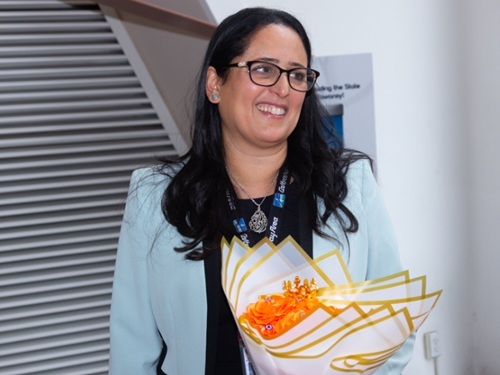The Oregon Transportation Commission officially adopted on Oct. 2 the new Oregon Public Transportation Plan or OPTP that’s been in the works for two years – a plan designed to guide investments locally, regionally, and statewide in services such as fixed-route bus lines, door-to-door buses, streetcars, and light rail, plus intra-community transportation.
Lucia Ramirez, principal planner with the Oregon Department of Transportation, explained to the AASHTO Journal by email that “two to three months is a good estimate” as to when a final version of the OPTP will be published.

“The OPTP emphasizes connections between various public transportation services and to bicycle and pedestrian facilities, and it considers connections to newer modes throughout,” she added. “Most of the plan was written before the recent [electric] scooter phenomenon, but it uses a lot of example lists with ‘such as’ and ‘may include,’ exactly because of how fast the landscape for transportation is changing.”
Ramirez noted that the OPTP also tries to provide “a flexible and adaptable policy foundation” for investment decisions, especially for “connected” public transportation. “Accessibility and connectivity and refers to riders’ experience of ‘user-friendly’ and ‘convenient ‘public transportation connections to and between services and travel modes,” she said.
Another strategy incorporated in the plan, Ramirez said, aims to develop solutions for “first and last mile” concerns. The plan “seeks to eliminate first and last mile barriers by improving public transportation links to other facilities and services,” she noted. “These may include accessible facilities, sidewalks, trails, bicycle parking, bikeways, car-share, TNCs [transportation network companies or ride-sharing firms] and taxis, [plus] bike-share services.”
“We are moving forward into the future where we are going to see big changes,” added Stephen Dickey of the Cherriots public transit agency serving the town of Salem-Keizer and a member of the OTC’s policy advisory committee in a statement.

It does not include specific projects, he added, but instead provides “a policy foundation” aimed at helping create a connected public transportation system for communities and the state.
“The flexible framework in the plan will help transit and transportation organizations anticipate and respond effectively to change, such as that coming from new technologies and an aging population,” Dickey noted. “We need a relevant starting point, and we need a dynamic plan that doesn’t lock us into the technologies or the solutions of today but must remain relevant to the changing needs of our communities.”
He added that the new plan puts forward the following vision: “In 2045, public transportation is an integral, interconnected component of Oregon’s transportation system that makes Oregon’s diverse cities, towns, and communities work. Because public transportation is convenient, affordable, and efficient, it helps further the state’s quality of life and economic vitality and contributes to the health and safety of all residents, while reducing greenhouse gas emissions.”
 States
States
Dina El-Tawansy Appointed Director of Caltrans
July 11, 2025 States
States

